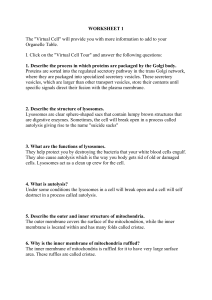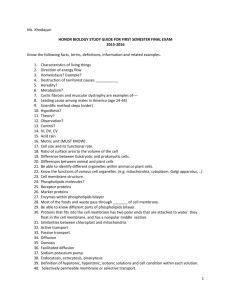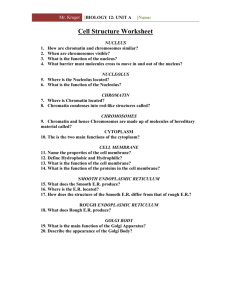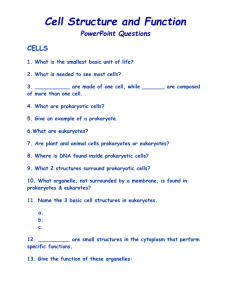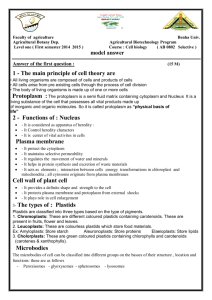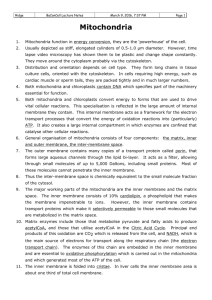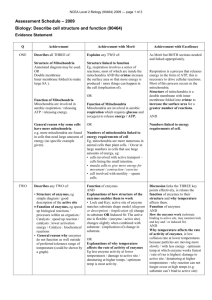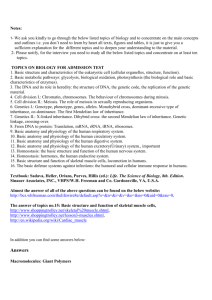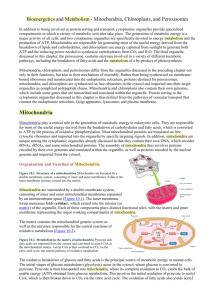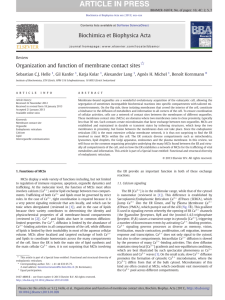Bio 11 – Virtual Cell Assignment
advertisement
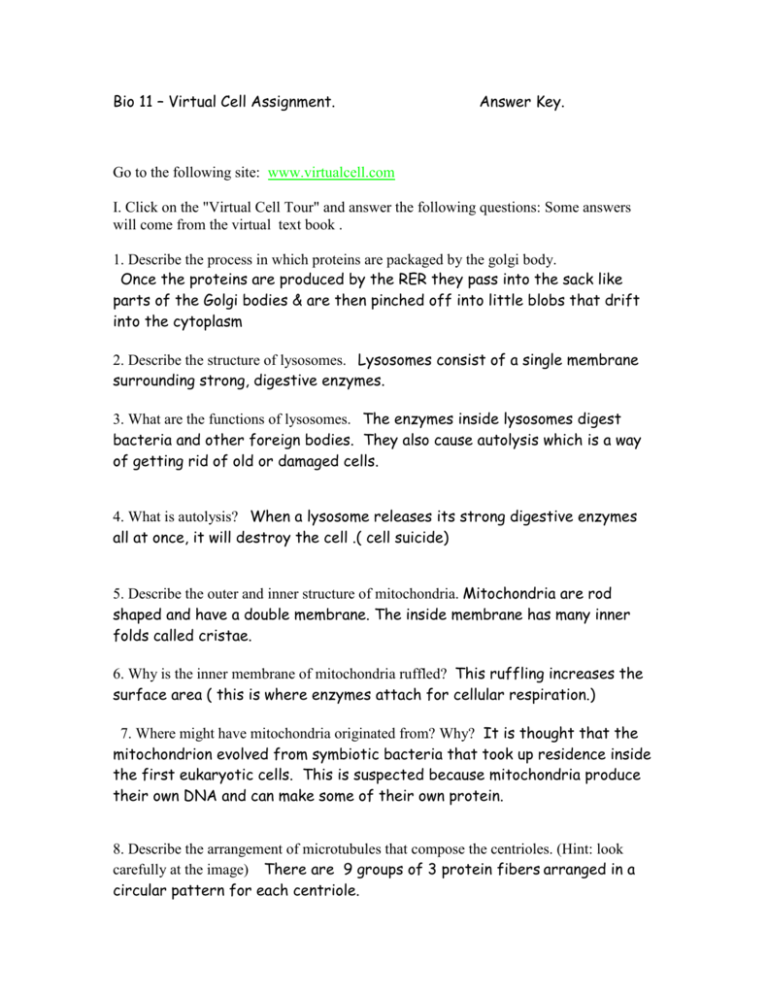
Bio 11 – Virtual Cell Assignment. Answer Key. Go to the following site: www.virtualcell.com I. Click on the "Virtual Cell Tour" and answer the following questions: Some answers will come from the virtual text book . 1. Describe the process in which proteins are packaged by the golgi body. Once the proteins are produced by the RER they pass into the sack like parts of the Golgi bodies & are then pinched off into little blobs that drift into the cytoplasm 2. Describe the structure of lysosomes. Lysosomes consist of a single membrane surrounding strong, digestive enzymes. 3. What are the functions of lysosomes. The enzymes inside lysosomes digest bacteria and other foreign bodies. They also cause autolysis which is a way of getting rid of old or damaged cells. 4. What is autolysis? When a lysosome releases its strong digestive enzymes all at once, it will destroy the cell .( cell suicide) 5. Describe the outer and inner structure of mitochondria. Mitochondria are rod shaped and have a double membrane. The inside membrane has many inner folds called cristae. 6. Why is the inner membrane of mitochondria ruffled? This ruffling increases the surface area ( this is where enzymes attach for cellular respiration.) 7. Where might have mitochondria originated from? Why? It is thought that the mitochondrion evolved from symbiotic bacteria that took up residence inside the first eukaryotic cells. This is suspected because mitochondria produce their own DNA and can make some of their own protein. 8. Describe the arrangement of microtubules that compose the centrioles. (Hint: look carefully at the image) There are 9 groups of 3 protein fibers arranged in a circular pattern for each centriole. 9. Describe the outer membrane of the nucleus. The nuclear membrane has many pores. The nuclear membrane is continuous with the E.R 10. Describe the inner contents of the nucleus. The inner contents of the nucleus contain thick ropy strands called chromatin. The large solid spot is the nucleolus. 11. Describe the appearance of the nucleolus. The nucleolus is a dense knot of chromatin which manufactures ribosomes. 12. Describe the appearance of the endoplasmic reticulum. It is a folded system of membranes that loop back and forth giving it a very large surface area. 13. What makes rough ER "rough"? RER is rough because ribosomes are attached to it. 14. What is the function of the chloroplasts.? What do they look like? Chloroplasts are the site of photosynthesis and they are green cylinder like bodies. 15. In the cell membranes – what are the blue and yellow structures called? What are the pink structures? Blue and yellow are the phospholipids and the pink structures represent the protein molecules. 16. What do marker proteins in the cell membrane do? Marker proteins identify the cell to other cells. 17. In the cell membrane there are channel proteins. Are they involved with active or passive transport? They are involved with passive transport since the cell uses no energy – it is diffusion which causes particles to move through the channel proteins. 18. Observe the animation of endocytosis. What is the example shown on the web site of endocytosis? In this animation an ameba engulfs a food particle. 19. Find the animation of a contractile vacuole. Why must single celled pond organisms (protozoa) have these types of vacuoles? Protozoa must constantly excrete the water that enters through their membranes to combat the effects of osmosis. 20. Find plastids and then look up leucoplasts and amyloplasts. What function do they serve? Give an example. Leucoplasts (colorless plastids) usually store food molecules such as starch being stored in potato cells.


